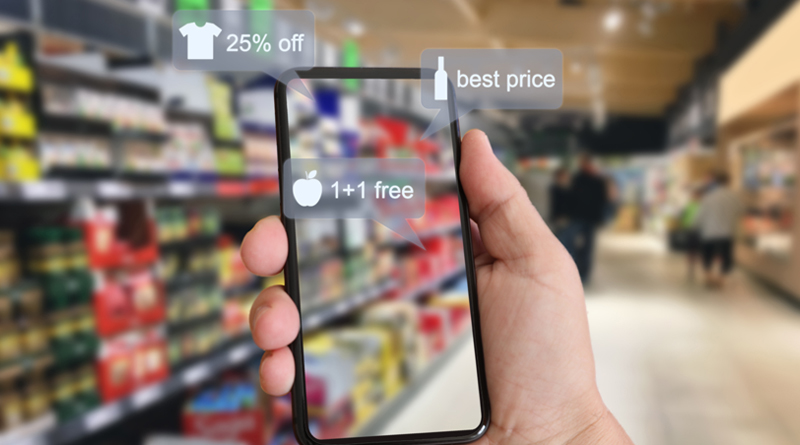The retail landscape is undergoing a profound metamorphosis, reshaped by the relentless march of technology and changing consumer expectations. Gone are the days when retail was synonymous with physical storefronts alone. Today, consumers demand more than just products; they crave personalized and immersive shopping experiences.
Changing Face of Retail
E-commerce platforms have surged in popularity, enabling consumers to shop conveniently from their homes or mobile devices. The COVID-19 pandemic accelerated this shift, with online shopping becoming a necessity rather than a choice during lockdowns and social distancing.
To stay competitive, retailers must adapt to this digital revolution. It’s not enough to merely have an online presence; businesses must also provide engaging, seamless, and personalized shopping journeys that resonate with today’s tech-savvy customers.
Rise of Generative AI in Retail
Enter Generative Artificial Intelligence (Generative AI), a groundbreaking technology that promises to redefine the retail landscape. Generative AI is a branch of artificial intelligence (AI) that specializes in generating content and insights from large datasets. It leverages deep learning algorithms to decipher patterns, predict outcomes, and create personalized experiences.
In the context of retail, Generative AI is a formidable tool. It enables retailers to analyze vast growth of customer data, encompassing everything from purchase history to browsing habits and demographic information. With this wealth of information, retailers can craft tailor-made shopping experiences, recommending products that align with each customer’s unique preferences.
Generative AI for Business expansion | Key Components of an Intelligent Data and AI Platform
Benefits of Being an Early Adopter
-
Competitive Edge:
Early adopters of Generative AI gain a significant competitive advantage. By implementing cutting-edge technology ahead of the curve, they position themselves as industry leaders and innovators.
-
Enhanced Customer Engagement:
Generative AI empowers retailers to deliver highly personalized and engaging experiences to their customers. Early adopters can captivate their audience with tailored product recommendations, personalized marketing, and dynamic pricing strategies.
-
Improved Operational Efficiency:
Generative AI isn’t just about customer-facing applications. It can also optimize inventory management, demand forecasting, and supply chain operations. Early adopters enjoy streamlined processes and cost savings.
-
Data-Driven Insights:
Generative AI processes vast amounts of data, providing early adopters with invaluable insights into customer behavior and preferences. This data-driven approach allows for better decision-making and targeted marketing campaigns.
-
Adaptive Learning:
Generative AI continuously evolves and refines its algorithms as it learns from user interactions. Early adopters benefit from a self-improving system that becomes more effective over time.
Cloud-based time and attendance systems | Discover the Power of Drupal 10 | Navigating the Drupal 9 End-of-Life
Success Stories: Early Movers in Retail
In the fast-paced world of retail, staying ahead often means embracing innovative technologies early on. Here, we showcase two success stories of retailers who were early adopters of Generative Artificial Intelligence (Generative AI), demonstrating how this technology has transformed their operations.
Case Study 1: Retailer A’s Journey with Generative AI
Retailer A, a well-established grocery brand, recognized the importance of personalization in the digital age. They adopted Generative AI to enhance their online shopping experience.

-
Personalized Product Recommendations:
With Generative AI’s ability to analyze vast amounts of customer data, Retailer A started providing personalized product recommendations. Shoppers saw items that matched their preferences, leading to a 25% increase in average order value.
-
Dynamic Pricing Optimization:
Retailer A implemented dynamic pricing using Generative AI. This allowed them to adjust prices in real-time based on demand, increasing their competitiveness. They experienced a 10% boost in sales and revenue.
-
Inventory Management:
Generative AI helped Retailer A optimize inventory levels. By predicting demand accurately, they reduced overstocking and stockouts, resulting in a 15% reduction in operational costs.
-
Enhanced Customer Engagement:
Personalized marketing campaigns and chatbots powered by Generative AI improved customer engagement. The retailer saw a 30% increase in customer retention rates.
Case Study 2: Retailer B’s Personalization Triumph
Retailer B, a startup in the Food and Beverage sector, aimed to differentiate itself by offering a highly personalized shopping experience.

-
Customer-Centric Personalization:
Using Generative AI, Retailer B introduced a customer-centric approach to personalization. They tailored product recommendations not only based on past purchases but also on customers’ tech preferences and usage habits.
-
Real-Time Assistance:
Retailer B incorporated a chatbot powered by Generative AI. This chatbot provided real-time assistance, answering customer queries, and suggesting suitable products. Customer satisfaction scores soared by 35%.
-
Sales and Revenue Growth:
Personalization led to a 40% increase in conversion rates. Retailer B’s revenue surged by 25% within the first six months of implementing Generative AI.
-
Data-Driven Decision Making:
Generative AI provided Retailer B with actionable insights into customer behavior. They used this data to refine their product offerings and marketing strategies, ensuring continued growth.
NOTE: These two case studies exemplify the transformative power of Generative AI in retail. Whether you’re an established brand like Retailer A or a newcomer like Retailer B, early adoption of Generative AI can pave the way for success by delivering personalized experiences, optimizing operations, and driving growth.
Power of Accessibility Testing | Winning at B2B Commerce | NopCommerce | Leveraging Big Data in Ecommerce
Winning Strategies for Retailers
In the highly competitive retail landscape, staying ahead of the curve is essential for success. Retailers need to adopt winning strategies that not only attract customers but also optimize their operations. Here are three key strategies that can give retailers a competitive edge:
Strategy 1: Customer Segmentation and Targeting
Understanding your customers is the cornerstone of successful retail. Customer segmentation involves categorizing your customer base into distinct groups based on demographics, behavior, preferences, and other relevant factors. Once you’ve segmented your customers, you can tailor your marketing efforts, product offerings, and pricing strategies to suit the unique needs of each group.
By analyzing data and employing advanced analytics techniques, retailers can gain insights into what drives each segment’s purchasing decisions. This enables them to create personalized marketing campaigns, recommend products, and offer promotions that resonate with specific customer groups. Ultimately, customer segmentation and targeting not only improve customer satisfaction but also boost sales and loyalty.
Strategy 2: Dynamic Pricing Optimization
Pricing is a critical aspect of retail strategy. Dynamic pricing optimization involves adjusting prices in real-time based on various factors such as demand, competition, inventory levels, and even external events like holidays or weather conditions. Dynamic pricing algorithms, powered by artificial intelligence and machine learning, enable retailers to set optimal prices that maximize profits while remaining competitive.
Retailers can use historical sales data, competitor pricing information, and market trends to determine the most effective pricing strategies. By continuously analyzing these factors and making rapid pricing adjustments, retailers can capture more revenue, prevent stock outs or overstock situations, and respond swiftly to market changes.
Strategy 3: Inventory Management and Demand Forecasting
Efficient inventory management and accurate demand forecasting are crucial for minimizing costs and maximizing revenue. Retailers can leverage data analytics and predictive algorithms to optimize their inventory levels and ensure they have the right products in stock at the right times.
Demand forecasting models use historical sales data, seasonality patterns, and other relevant factors to predict future demand with greater accuracy. Retailers can then adjust their procurement, production, and stocking strategies accordingly. Effective inventory management reduces carrying costs, prevents stockouts, and minimizes the need for deep discounts to clear excess inventory.
Incorporating modern technologies like RFID and IoT sensors can provide real-time visibility into inventory levels, helping retailers make informed decisions about restocking and replenishing. Moreover, by integrating demand forecasting with supply chain management, retailers can create a more streamlined and responsive supply chain, reducing lead times and improving overall operational efficiency.
Ultimate Guide To ChatGPT | Immersive eCommerce is Here | Power Up your B2B eCommerce with Search
Conclusion
By combining these strategies and embracing the potential of generative AI, retailers can not only survive but thrive in an ever-changing retail landscape. Success in retail hinges on the ability to adapt, innovate, and provide exceptional experiences that keep customers coming back. With the right strategies and technology in place, retailers can look forward to a prosperous and personalized future in the retail industry. Reach out to us today for a free consultation!!









